The desert is one place where you don’t want to venture to unless you have the proper attire. And no I am not talking about trying to impress at Coachella. I’m talking about exploring the real desert. If you wander out into the desert without the right type of clothes, you are not only risking being extremely uncomfortable, you’re potentially risking your health as well.
I have done a lot of traveling through the desert in my day, and I have learned quite a few things. Below is a comprehensive list of all of the desert clothes that you might need to pack on your trip to the desert.
I will first provide a brief overview of the elements you can expect to experience in a desert environment, and then I will cover proper desert clothing items, starting at the top of your body.
Table of Contents
Desert environments
Before you go putting together your wardrobe for your desert trip, you should think about some of the different elements you will encounter, because those will likely dictate the type of clothing you should choose. Here are some things to consider.
Extreme temperatures
Deserts are known for their extreme temperatures.
Obviously, the most common association is a scorching hot day in a desert which means that you need to be prepared for very high temperatures and bring along ventilated and lightweight clothing. Clothing that will wick away moisture is also very helpful for keeping your cool.
UV exposure
UV rays can start damaging your skin in as soon as five minutes so you also need to protect against prolonged UV exposure which can be done with clothing that has a UPF (Ultraviolet Protection Factor).
UPF is basically the same thing as SPF it is just that SPF is used for rating sunscreen while UPF is used to rate the effectiveness of blocking out UV rays with clothing. I would look for a UPF of 50+ which should block out around 98% of the sun’s UV rays.
High temperatures also mean expansion of your body parts such as your feet. This means that you should look for clothes that fit you comfortably and not too snug.
This is especially true for your clothing which could interfere with your perspiration.
In order for your body to keep cool, you need to be able to sweat and your sweat needs to evaporate. If your clothes are too tight, your sweat will not be able to evaporate and your body temperature will not drop (think about how a wetsuit keeps you warm).
Also be careful with sunscreen. Sometimes sunscreen can prevent you from properly sweating which can interfere with your body’s ability to cool down.
In many cases, you would be better off with clothes that have UV protection and have enough space for air to pass through and evaporate your sweat.
And here is a fact for you: if the sun is not an issue, such as in the evening or at night, your best bet for cooling off is to simply strip off your clothes.
Don’t forget: You also need to consider the extreme cold temperatures if you are venturing into a desert where you might be exposed to very cold weather. (This article will focus more on high temperatures.)
Sandy environments
In many desert environments you will encounter a lot of sand (shocker, I know).
As you already are probably aware, sand finds a way to get into anything and everywhere, especially when visiting places like Antelope Canyon. So you need to think about ways that you will be able to keep sand out of places like your shoes, crevices, and not to mention all of your bags and electronics.
Rough environments
Many desert landscapes involve navigating some pretty harsh environments. You might be scrambling over rough boulders and rocks or making your way through skinny trails lined with prickly cacti. This is where it gets tough because you want to find this fine balance between breathable and durable clothing materials that can withstand a little bit of punishment.
Water environments
I’ve been on a number of desert sites where we have needed to venture into or across water. Sometimes this meant just hopping over a stream but other times it meant wading through several feet of cold water. So you need to think about how your wardrobe and shoes might hold up in these type of wet environments.
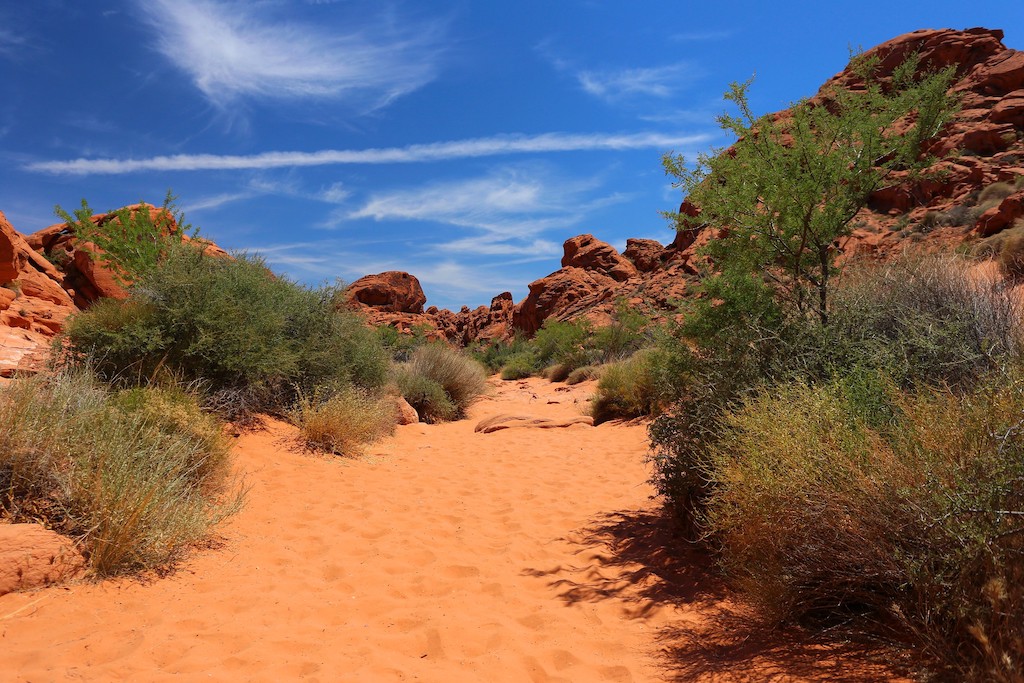
Avoid black
While there is a little bit of debate about which color to wear in hot environments, generally you probably want to avoid black if possible. The reasoning is that black absorbs heat and therefore will make you hotter (especially thinner materials) while light clothing will reflect heat and keep the heat away from you, allowing you to remain cool.
Now that we have covered some of the basics, below I will go into detail about all of the optimal desert clothing.
Booney Hat
A booney type hat is a definite necessity when traveling in the desert.
A good desert hat will be very breathable (might use mesh), wick moisture, and provide optimal shade for your face, ears, and your neck. Cotton can work but so can a variety of other materials like nylon as long as they are vented.
I would recommend going with a hat that has a wide bill/brim around the entire circumference so that you can get more shade for your ears and part of your neck. If you go with a traditional baseball cap, you will need some type of additional covering like a towel or some other type of device that covers your neck.
You could always go for something a bit more serious like this hat that offers protection all around your entire face.
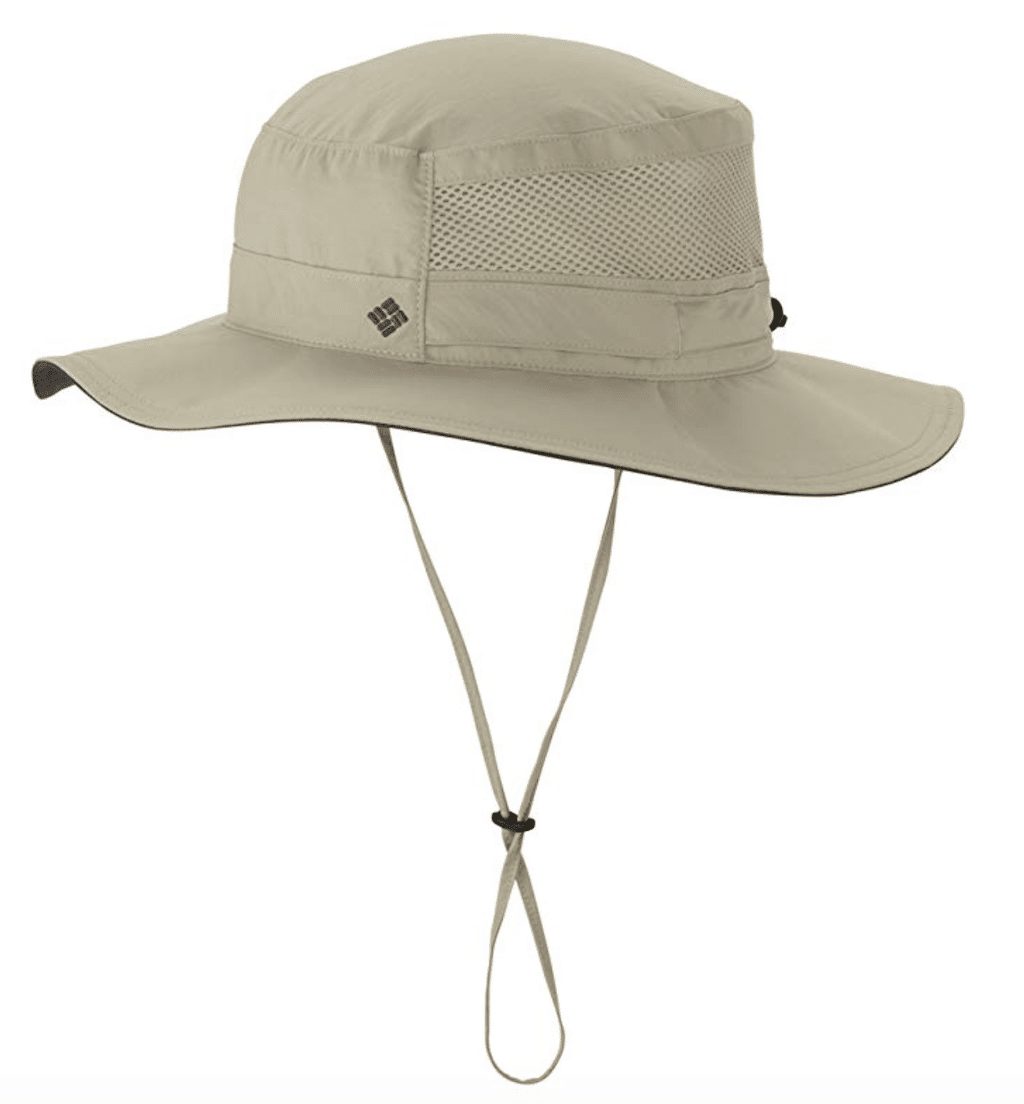
Towel/cooling hoodie
There are many hikes in the desert that will take you through open washes and sandy trails where there is virtually no shade available. And for these hikes, you need something to protect you in exposed areas like your neck and ears.
A towel can help protect you from the sun and to keep you dry when traveling through a hot and sunny environment. You can find towels with UV protection that wick moisture away from your skin and are pretty lightweight and thin enough to fit underneath a hat.
However, I might take it a step further and look at getting something like a cooling hoodie which can easily protect the areas of your neck and sides of your head underneath a hat. You might even consider getting a special cooling towel that can also help bring down your temperature.

Category 4 polarized sunglasses
Sunglasses are an absolute necessity when trekking in the desert. You can do some serious damage to your eyes by exposing yourself to blinding glares over long periods of time and it will just be a miserable hiking experience.
I would recommend going with a nice pair of polarized sunglasses with UV protection. Polarized sunglasses come in different varieties and they are classified based on categories 1 to 4. I would recommend you go with category 4 polarized sunglasses to reduce the maximum amount of glare.
You might also consider going with some type of special tinted glasses. Tinted glasses can help bring out more contrast and details depending on the environment that you are in. In the case of a desert, you are probably looking to reduce glare and perhaps highlight details so that you can better see things like the trail markers and cairns. And for those purposes, I think strong polarized category 4 sunglasses do the trick.
As mentioned above dust hitting your face can be an issue in the desert, so you might want to think about getting glasses that offer up more protection from dust or flying sand. You may not necessarily need motorcycle goggles but some glasses do wrap around your face more and provide a wider screen of protection.

Bandanna/Neck Gaiter
A bandanna can come in handy in the desert for multiple reasons.
You could use it to protect your neck but it is versatile and you can also use it to protect your mouth and nose from any dust storms or strong winds blowing dust or sand in your face. (You may also just use a neck gaiter.)
You might also use bandannas for navigational purposes. For example, you could tie one tightly around the entry point for a trail if you are looping back or for some other landmark purpose.

Bonus tip: Chapstick
Typically, when you think of needing chapstick or lip balm you probably think about traveling in cold climates. But when you are heading into the desert, your lips can get seriously sunburned or even windburned depending on the conditions. So it is always a great idea to bring along chapstick with SPF protection.
Long sleeve shirt with UPF 50+
If you are venturing into the desert during a time with little clouds in the sky, you will be exposing yourself to a lot of sun whether you are traveling in the winter or summer. I would recommend to get a long sleeve shirt that offers UV protection and fits loosely for optimal perspiration evaporation. You can find a shirt like that right here.
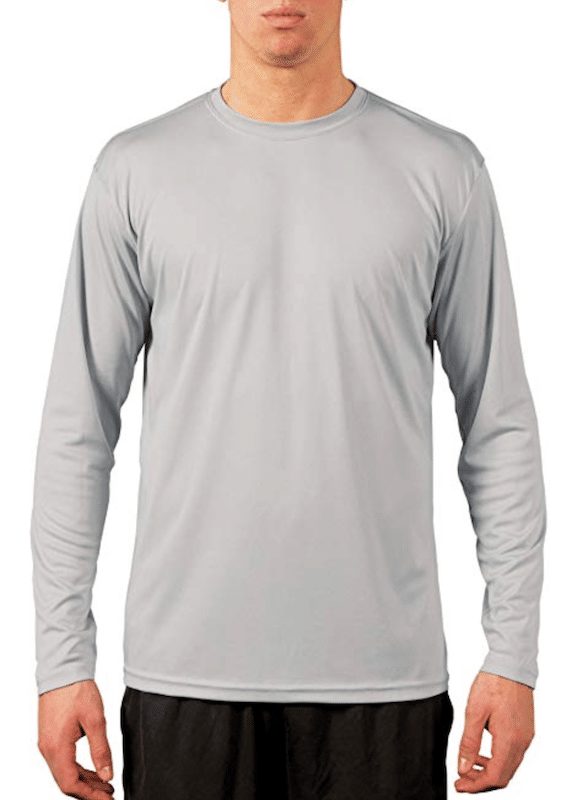
Lightweight, packable down jacket
Depending on the time of year you are visiting, the desert can get quite cool or even very cold in the evenings and at night. That means that in some cases you would want to bring along some type of insulated jacket to keep you warm.
I would recommend to go with something lightweight and packable. You can look at getting down insulated jackets (stuffed with duck, feather, etc.) or other lightweight jackets.
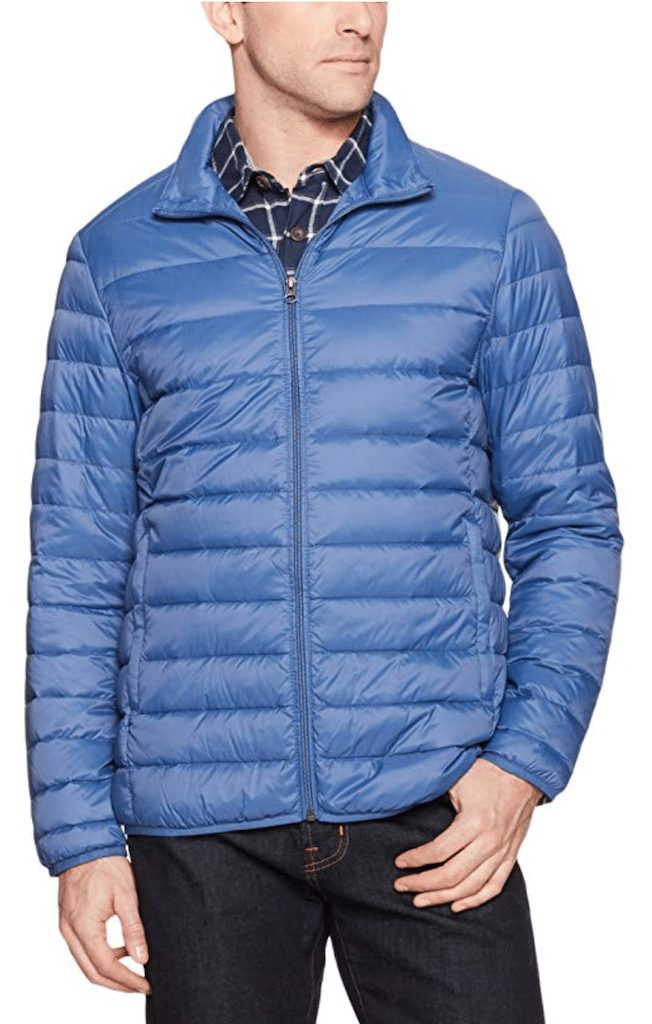
Puncture-resistant gloves
You might want to pack a pair of puncture-resistant gloves just in case of an emergency or in case you want to explore some cacti. These gloves can be used to handle a cactus that you can use it to replenish you with water/calories. You can never be too prepared in the desert.
Belt
You want to make sure you have a decent belt to keep your pants up and to keep you comfortable. Generally, I would recommend going with a tactical belt because these nylon belts can be more comfortable than a standard belt.
Lightweight and breathable pants
The best type of garment to wear for your lower body when traveling through the desert is a nice pair of hiking pants.
Pants might seem counterintuitive due to the high temperatures you might be facing but if you find a nice pair of breathable, UV blocking pants they can save you a world of hurt that you would get from sunburn. Trust me, it is very easy to get a serious sunburn on your legs when going on a long hike on a hot summer day in the middle of the desert.
The type of material you should go with kind of depends on personal preference. Some people swear by nylon or polyester materials and others prefer cotton. I think that I personally just prefer a lightweight material that feels very breathable and comfortable and wicks away moisture.
You can easily find a nice pair of convertible pants that can be converted into shorts if you do get too hot. Generally, I have found the best brands for convertible pants to be REI or Columbia. You should be able to find a pair with high UPF
The issue with using convertible pants in desert areas is that the sand can cause issues for the convertible pants if they use zippers.
I like pants with elastic waist bands especially if you are traveling through the desert because that can help keep sand out of your pants. I would also recommend to get a pair with cargo pockets since you might be hauling around a stash of snacks or a little gadgets like GPS or compasses. When traveling in the desert, you might want your pockets to be a little bit less baggy to keep some of the sand out.
Breathable Underwear
Your underwear should be optimized for keeping you as dry and cool as possible. I usually go with a pair that has some sort of mesh that allows it to be more breathable than standard underwear. Adidas has been one of my favorite brands for breathable men’s underwear for a long time.
The other thing you want to think about is to prevent chafing or friction between your thighs. This sort of thing depends on how you walk and your body size and composition, but generally I would recommend underwear with longer length that also offers some sort of compression.
There are a lot of quick dry underwear that you can find as well as tactical underwear that could be comfortable. There are also anti-chafing sticks you can use as well.
Wool socks
If you were going into the desert you will want to get some quality socks. The type of socks you need might seem counterintuitive, though. For example you are probably imagining some sort of light material that keeps you cool and would not necessarily think of wearing wool socks in the desert.
But wool socks are simply amazing for hiking because they allow you to keep your feet dry — they don’t force you to live with damp and stinky feet.
Even better, they can help prevent blisters. If you are really worried about blisters, you can always bring some type of foot powder or even resort to trying to wear liners or pantyhose under your socks.
A brand of wool socks I have always trusted is People Socks and another brand to consider is Darn Tough.
Hiking boots
My top concern when it comes to footwear in the outdoors is comfort. I just completely throw fashion or style out of the window because at the end of the day none of that matters when in the outdoors.
Keeping sand out of your hiking boots
If you are traveling through the desert, then you want to think about keeping sand out of your shoes and protecting your ankles from prickly shrubs and cacti.
I would recommend you going with some sort of mid-top hiking boots in order to do this. High-top hiking boots might be a little bit excessive out in the desert but low top hiking boots will make it that much easier for sand to find its way in your shoe.
Breathable hiking boots
Since you will likely be dealing with high temperatures, you also want a pair of hiking boots that is breathable and offers some level of proper ventilation for your feet.
Make sure you have a little bit of extra room in your hiking boots as well. I once took a long hike on a sweltering day and my feet are swelled up so bad in the heat that one of my toenails ended up breaking off!
Great grip
When tracking through deserts like those in the western US, you will come across a variety of terrain. You might be making your way through a sandy pathway one second and then walking on an upward angle on some slippery sandstone the next. Then you might have to venture through a creek and scramble a top some boulders.
So you want to look for a hiking boots that will offer you versatility. You want to have a combination of good grip, breathability, and also at times it would be a help if you had waterproof hiking boots. But keep in mind that some boots with waterproof linings will not have good breathability since you often can’t have both.
If you are going to be spending a lot of time crossing creeks or rocky rivers, you might also think about bringing along a pair of canyoneering shoes. These will have you sticking to rocks like Spiderman and will make your journey much more easier to navigate. You may not need to purchase these because a lot of outdoors stores near national parks may allow you to rent these for a day.
Final word
Finding proper clothes for the desert means optimizing your wardrobe for the following:
- Lightweight materials
- Breathability
- Protection against sand accumulation
- Moisture wicking materials
- Protection to UV rays
- Minimizing friction and discomfort
If you take the above factors into consideration, you should have no problem getting clothes for your next desert excursion and will be completely prepared.
Daniel Gillaspia is the Founder of UponArriving.com and the credit card app, WalletFlo. He is a former attorney turned travel expert covering destinations along with TSA, airline, and hotel policies. Since 2014, his content has been featured in publications such as National Geographic, Smithsonian Magazine, and CNBC. Read my bio.

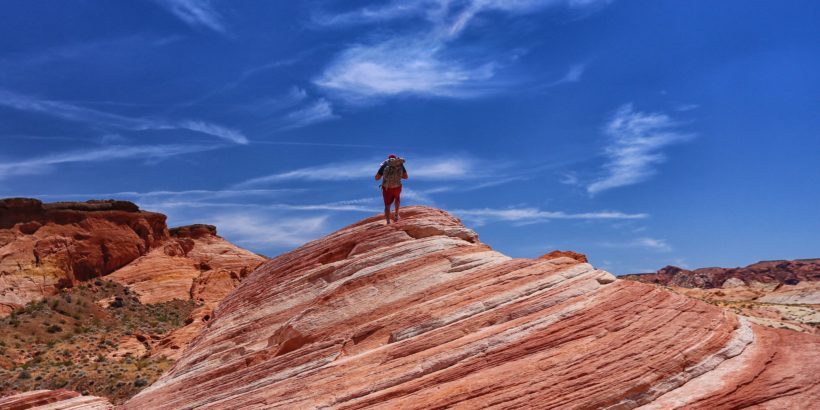
Brad is my man crush.
Same.